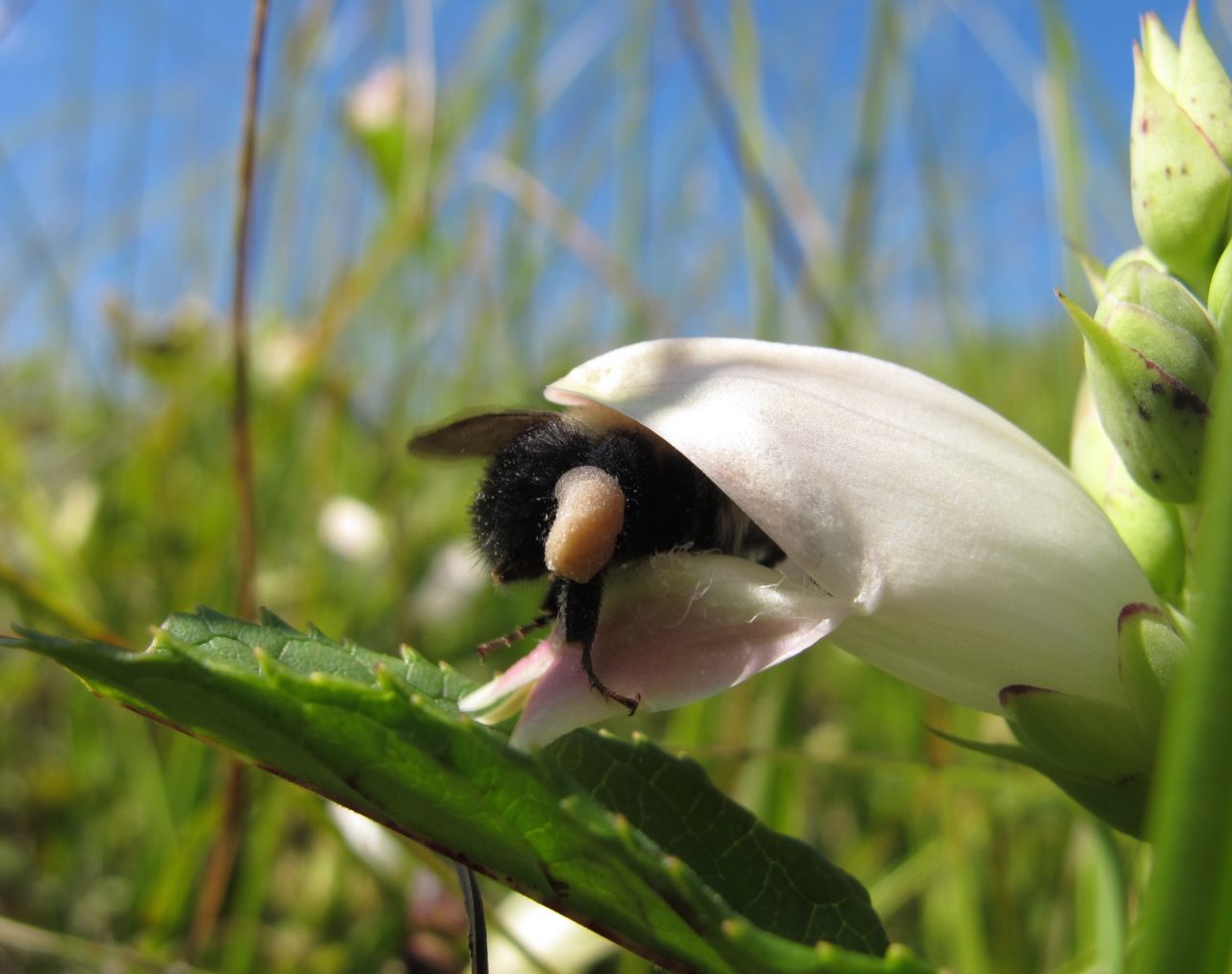Pollination ecology and floral visitor spectrum of turtlehead (Chelone glabra L.; Plantaginaceae)
DOI:
https://doi.org/10.26786/1920-7603(2015)18Abstract
Many flowering plants engage in mutualistic interactions with animals in order to sexually reproduce, exchanging food rewards such as nectar and pollen for the service of pollen transfer between flowers. Floral reward variation strongly influences visitation patterns of both pollinating mutualists and non-mutualist consumers, with consequences for both male and female components of plant reproductive success. Despite the importance of pollination to ecological systems, the pollination ecology of many plants is poorly known. At seven sites over three years, we studied the mating system, floral visitors and pollen limitation of turtlehead (Chelone glabra L.), an eastern North America wetland herb. We found that the plant is autogamous, but requires pollinator visitation to set seed. C. glabra flowers are protandrous, with floral rewards that vary between male and female sex phases. We found diurnal variation in reward presentation that was a function of both floral phenology and consumer behavior. Bombus vagans Smith, the most common visitor to C. glabra flowers, removed a large fraction of available pollen (>36%) in single visits to newly opened flowers, and compared to other flower visitors, passively transported more pollen on flights between flowers and deposited more to conspecific stigmas, suggesting it was the most effective pollinator. The solitary bee Hylaeus annulatus L. made frequent visits to flowers, but contributed little to pollination due to morphological mismatch and because it avoided male-phase flowers. Despite high bee visitation rates, flowers were pollen limited for seed production, possibly indicating a negative effect of non-pollinating flower visitors on plant reproductive success.

Downloads
Published
How to Cite
Issue
Section
License
Copyright (c) 2015 Leif L. Richardson, Rebecca E. Irwin

This work is licensed under a Creative Commons Attribution 4.0 International License.
JPE is an open access journal which means that all content is freely available without charge to the user or his/her institution.
Authors who publish with this journal agree to the following terms:
1) Authors retain copyright and grant the journal right of first publication with the work simultaneously licensed under a Creative Commons Attribution License that allows others to share the work with an acknowledgement of the work's authorship and initial publication in this journal.
2) Authors are able to enter into separate, additional contractual arrangements for the non-exclusive distribution of the journal's published version of the work (e.g., post it to an institutional repository or publish it in a book), with an acknowledgement of its initial publication in this journal.
3) Authors are permitted and encouraged to post their work online (e.g., in institutional repositories or on their website) prior to and during the submission process, as it can lead to productive exchanges, as well as earlier and greater citation of published work (See The Effect of Open Access).
To assure a broader targeted audience, content will be included into databases (such as EBSCO) and directories (such as DOAJ).











